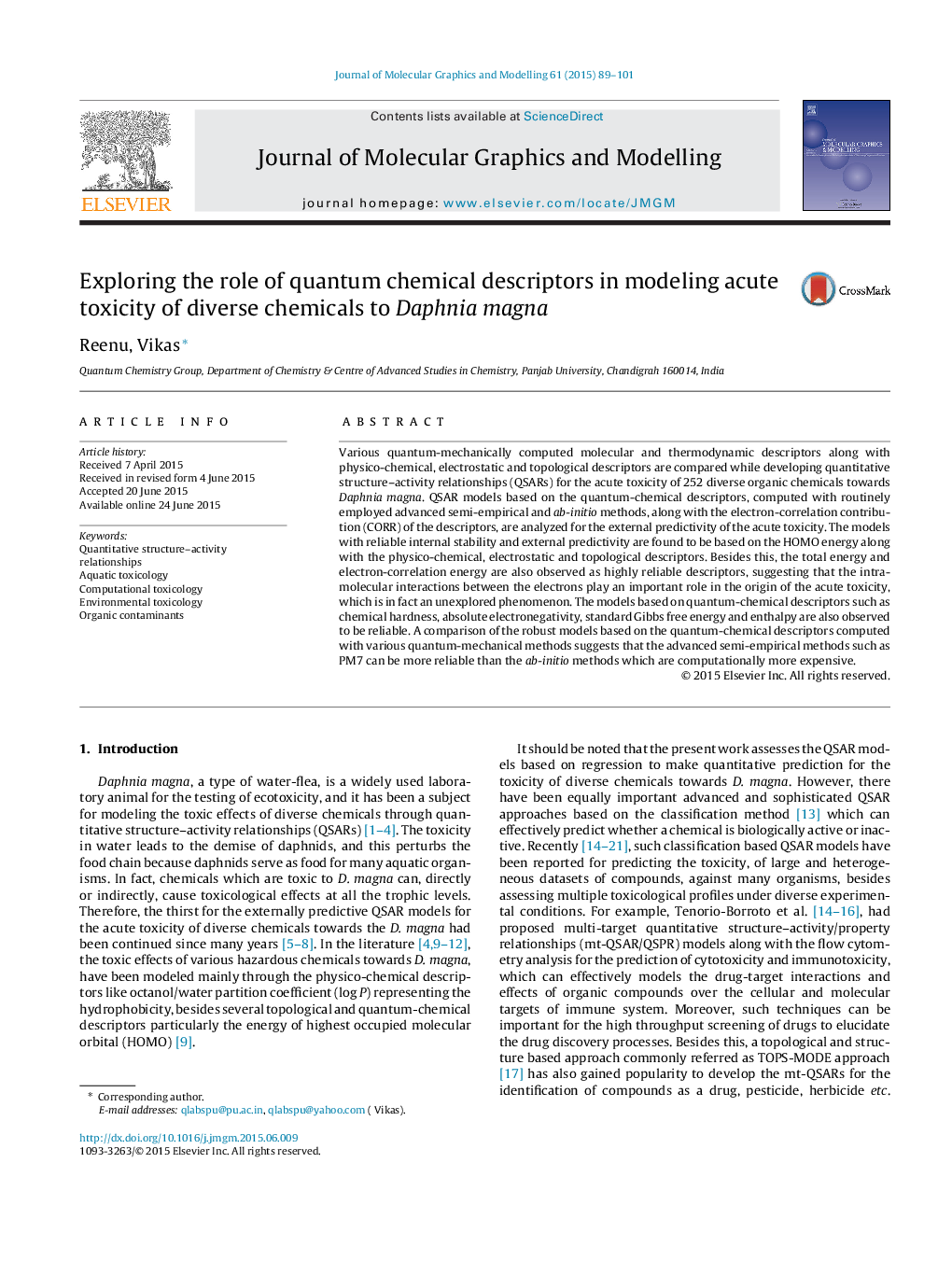| Article ID | Journal | Published Year | Pages | File Type |
|---|---|---|---|---|
| 443454 | Journal of Molecular Graphics and Modelling | 2015 | 13 Pages |
•Expression of acute toxicity is analyzed at the level of electron-dynamics.•Real predictivity of acute toxicity of 252 diverse organic chemicals is tested.•Total energy and HOMO energy proposed as best simulators of acute toxicity.•Electron-correlation energy found to be a good predictor of acute toxicity.•Advanced semi-empirical method PM7 observed to be highly reliable.
Various quantum-mechanically computed molecular and thermodynamic descriptors along with physico-chemical, electrostatic and topological descriptors are compared while developing quantitative structure–activity relationships (QSARs) for the acute toxicity of 252 diverse organic chemicals towards Daphnia magna. QSAR models based on the quantum-chemical descriptors, computed with routinely employed advanced semi-empirical and ab-initio methods, along with the electron-correlation contribution (CORR) of the descriptors, are analyzed for the external predictivity of the acute toxicity. The models with reliable internal stability and external predictivity are found to be based on the HOMO energy along with the physico-chemical, electrostatic and topological descriptors. Besides this, the total energy and electron-correlation energy are also observed as highly reliable descriptors, suggesting that the intra-molecular interactions between the electrons play an important role in the origin of the acute toxicity, which is in fact an unexplored phenomenon. The models based on quantum-chemical descriptors such as chemical hardness, absolute electronegativity, standard Gibbs free energy and enthalpy are also observed to be reliable. A comparison of the robust models based on the quantum-chemical descriptors computed with various quantum-mechanical methods suggests that the advanced semi-empirical methods such as PM7 can be more reliable than the ab-initio methods which are computationally more expensive.
Graphical abstractFigure optionsDownload full-size imageDownload high-quality image (139 K)Download as PowerPoint slide
